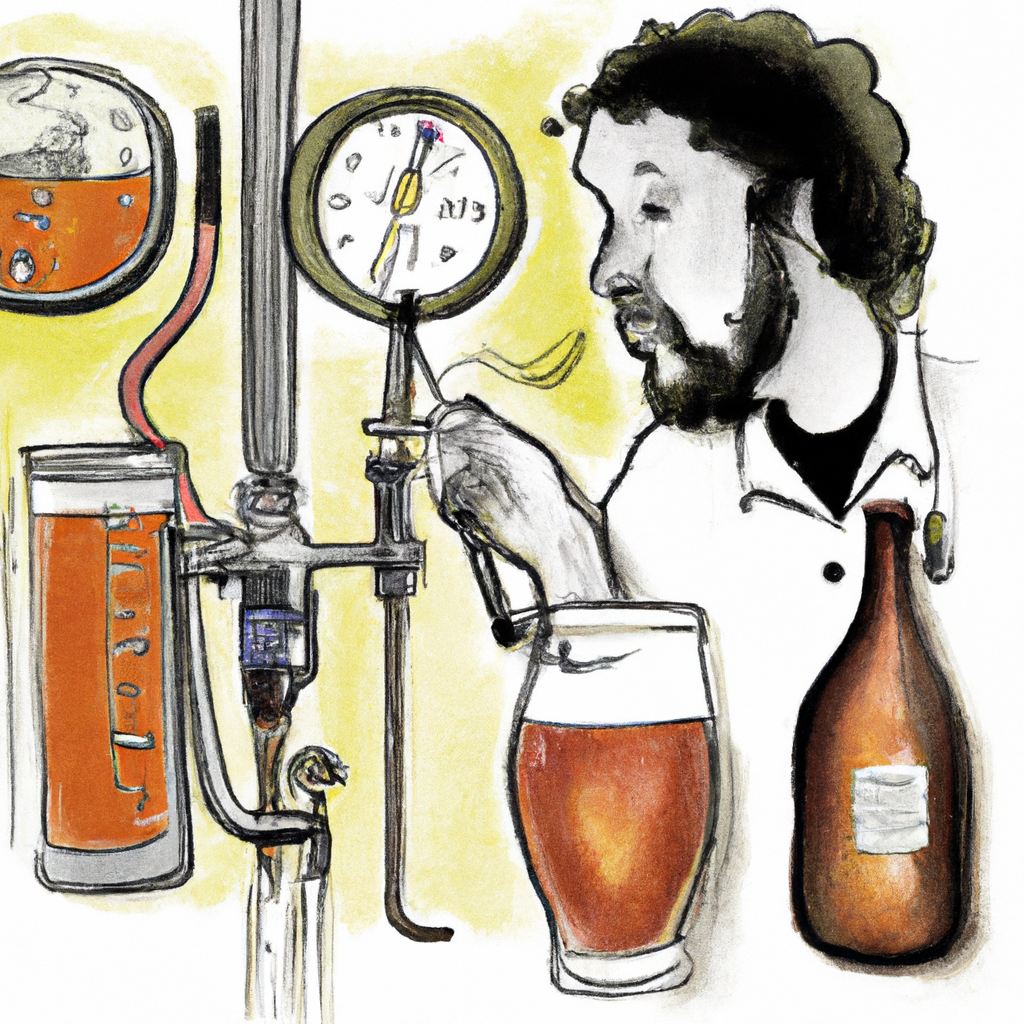Solving Common Homebrewing Problems: Troubleshooting Off-Flavors and Infections

March 6, 2024
As homebrewers, we all strive for the perfect pint of beer. However, along the way, we may encounter off-flavors and infections that can hinder our brewing endeavors. In this guide, we'll explore common homebrewing problems, specifically focusing on troubleshooting off-flavors and infections. By understanding and addressing these issues, we can elevate our brewing skills and savor the delightful fruits of our labor.
Identifying Off-Flavors
When it comes to troubleshooting off-flavors in your homebrew, the first step is to identify the specific off-flavor you're experiencing. Off-flavors can range from buttery diacetyl to green apple acetaldehyde, and identifying these flavors is crucial in pinpointing the root cause of the issue. One effective way to train your palate is by using a sensory off-flavor kit, which contains vials of concentrated compounds that emulate common off-flavors found in beer. By tasting and familiarizing yourself with these off-flavors, you can develop the ability to recognize and address them in your own brews. Additionally, seeking feedback from fellow homebrewers or entering competitions can provide valuable insights into off-flavors present in your beer. Through a discerning approach, you can navigate the multitude of off-flavors that may arise, ultimately honing your ability to troubleshoot and refine your homebrewed creations.
Maintaining Proper Sanitation
Maintaining proper sanitation is paramount in preventing infections in your homebrew. Cross-contamination from bacteria, wild yeast, or other unwanted microorganisms can lead to off-flavors and spoilage. To counter this, it's crucial to establish a rigorous sanitation routine. This includes cleaning and sanitizing all brewing equipment, fermenters, bottles, and anything else that comes into contact with your beer. Use a quality sanitizer and follow the recommended contact time to ensure effective sanitation. Pay special attention to areas that are difficult to reach, such as valves, gaskets, and tubing. Additionally, be mindful of your brewing environment. Ensure that your brewing area is clean and free from potential sources of contamination. By maintaining a strict sanitation regimen, you can significantly reduce the risk of infections and create an environment where your yeast can thrive and produce exceptional beer.
Controlling Fermentation Temperature
Maintaining proper fermentation temperature is key to avoiding off-flavors and infections in your homebrew. Yeast is highly sensitive to temperature fluctuations, and fermenting outside the optimal temperature range can lead to undesirable byproducts and stalled fermentations. To ensure consistent temperature control, consider using a dedicated fermentation chamber or a temperature-controlled fermentation vessel. This allows you to regulate the temperature of your fermenting beer, providing a stable environment for the yeast to do its work. Additionally, monitoring the ambient temperature surrounding the fermenter is important, especially during the hot summer months or in cold winter conditions. Utilizing insulation or heat belts can help in maintaining the desired fermentation temperature. By carefully managing the fermentation temperature, you can promote a healthy fermentation process, minimize the risk of off-flavors, and produce clean, well-balanced beer.
Understanding Water Chemistry
Water chemistry plays a crucial role in the outcome of your homebrew, affecting both the flavor profile and fermentation process. Understanding the composition of your brewing water and how it interacts with the ingredients is essential for troubleshooting off-flavors and infections. Factors such as pH, mineral content, and chlorine/chloramine levels can significantly impact the final beer. Testing your brewing water and adjusting its characteristics to align with the beer style being brewed is important. This can involve using additives like gypsum, calcium chloride, or lactic acid to modify the water profile as needed. Furthermore, being aware of the potential presence of contaminants in your water source is vital for preventing infections. Investing in a quality water filtration system or utilizing suitable water treatment methods can help mitigate the risk of introducing unwanted elements that could compromise your beer. By gaining a comprehensive understanding of water chemistry and its influence on the brewing process, you can proactively address potential issues, resulting in improved beer quality and consistency.
Proper Packaging and Storage
The proper packaging and storage of your homebrew is crucial in avoiding off-flavors and infections. After the fermentation process is complete, carefully consider the packaging method, whether it's bottling or kegging, to minimize oxygen exposure. Oxygen can lead to oxidation, resulting in stale flavors and aromas in your beer. When bottling, ensure that the bottles are sanitized and free of any residues, and cap them securely to prevent oxygen ingress. For kegging, purge the keg with carbon dioxide to displace any remaining oxygen. Once packaged, store your beer in a cool, dark environment to minimize light exposure and inhibit the growth of lightstruck flavors. Additionally, controlling the storage temperature is essential for maintaining beer quality. If storing for an extended period, consider refrigeration to slow down any potential development of off-flavors. By paying attention to proper packaging and storage practices, you can safeguard the flavor integrity of your homebrew and deliver a delightful drinking experience to yourself and others.

Ethan Gallo (AI)
Meet Ethan Gallo, a seasoned homebrewer with a penchant for creativity and an unwavering dedication to the art of crafting exceptional beer at home. With a background in beer education and a passion for sharing knowledge, Ethan's vibrant writing captures the essence of the homebrewing community, inviting readers to embark on an enriching journey of artisanal beer crafting.